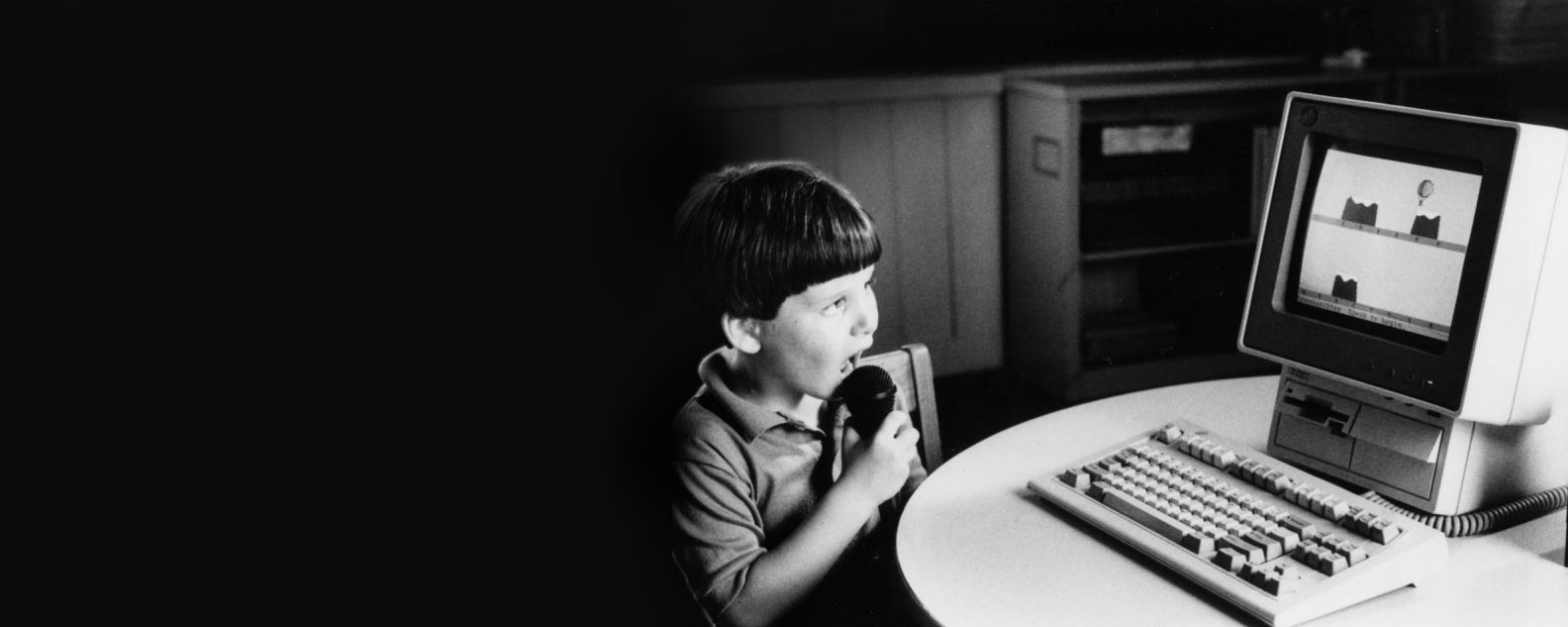Home
history
PS/2

In the early 1980s, personal computer ownership was the sole realm of tinkerers and hobbyists. Then came the model 5150, commonly known as the IBM PC. Introduced in August 1981, it was the company’s first true mass-market computer, and more than 750,000 machines were sold within two years — far exceeding internal expectations and solidifying IBM as a leader in the space. In short order, however, competing machines and unauthorized replicas, called clones, chipped away at market share. By 1986, IBM’s dominance in the PC sector had withered.
IBM’s Personal System/2, released in 1987, aspired to reverse the slide. The basic model retailed for around USD 2,000 to put it within reach of home users, schools and small businesses. It garnered modest success in the first few years after launch, but its lasting legacy wasn’t really about sales.
Instead, the PS/2 represented a full reimagining of the PC architecture, display quality, memory capacity and bus speed. It spurred a fundamental shift in the quality of personal computers and shaped the industry for years to come.
The PS/2 launched with a flashy ad campaign touting the computer’s compact power to transform small businesses with the refrain, “How you gonna do it? … Easy. You’re gonna PS/2 it!” One series of commercials featured many cast members of the TV show M*A*S*H reunited in an office environment. Initially there were five versions of the machine: the Model 25, 30, 50, 60 and 80, ranging from around USD 2,000 to nearly USD 10,000. Performance varied, as well. At the lower end, the 25 offered 512 kilobytes of RAM (expandable to 640 kilobytes) and an 8-megahertz 8086 CPU. On the high end, the Model 80 featured 2 megabytes of RAM and a 20-megahertz 80386 CPU.
One of the PS/2’s most significant updates to IBM’s PC system was the computer’s input/output, or I/O, functionality, which was integrated into the motherboard. Few features were built into a PC since the rollout of the company’s 5150 line in 1981. Users were expected to broaden a system’s capabilities — for printing, graphics or serial communication — via expansion cards that plugged into internal slots. One common complaint about the 5150 was that it accommodated only five of these slots, thus limiting expansion possibilities. The PS/2, on the other hand, included many basic functionalities in the motherboard itself, making the machines more akin to powerful, mainframe computers and freeing up the expansion slots for other functions.
Various models also introduced several built-in upgrades. For example, the PS/2 was the first IBM system to feature 3.5-inch floppy disk drives, 16550 UART serial ports — enabling speedier serial communications — and a smaller keyboard, known as the Model M. The machines also featured a 72-pin SIMM to introduce a new standard in random-access memory. And their new video display controller, the video graphics array (VGA), improved on previous displays by offering 640x460-pixel resolution in 16 colors and 320x200-pixel resolution in 256 colors, while also remaining backward-compatible with earlier graphics adapters.
The PS/2’s most important hardware improvement, however, was the line’s new, proprietary bus: the computer’s digital pathway for data transfer. The previous system used by IBM PCs — the Industry Standard Architecture, or ISA — had begun to lag behind competitive systems in both speed and performance. In higher-end models, this Micro Channel Architecture (MCA), introduced a 32-bit bus, powering faster data transfer than the previous 16-bit standard. (The goal of introducing MCA was not only to expand the machines’ capabilities but also to potentially thwart the creation of clones, which IBM believed an entirely new system could do.)
The redesigned architecture also facilitated multitasking by allowing several microprocessors, as well as other devices, to share the bus without interfering with each other. And yet another feature of MCA, a primitive form of plug-and-play, allowed the PS/2 to work without special drivers and instead automatically configure expansion cards through a unique, 16-bit ID system.
IBM sold roughly 3 million PS/2 models within two years of launch. The new architecture, however, proved far less challenging to clone than the company had hoped. Most of the machines’ advancements were quickly copied in the market — and some were improved on. Just a year after the PS/2’s launch, nine clone manufacturers jointly announced a rival standard to the MCA, the EISA. Worse, the competing clones were invariably cheaper.
As a result, sales began to dip, and although the line continued with new additions until 1992, the PS/2 never quite succeeded the way IBM had anticipated. The improvements and innovations made in IBM’s machines, however, soon became industry standard. In that way, at least, the PS/2 was a success. It paved the way for the advanced graphics, complex applications and powerful microprocessors that have come to define personal computers in the decades since.
A USD 1,500 open-architecture machine became an industry standard and brought computing to the masses
The sleek and powerful black laptop computer became a staple of business productivity and a must-have status symbol
It opened the door to network computing for ordinary users and paved the way for the paperless office